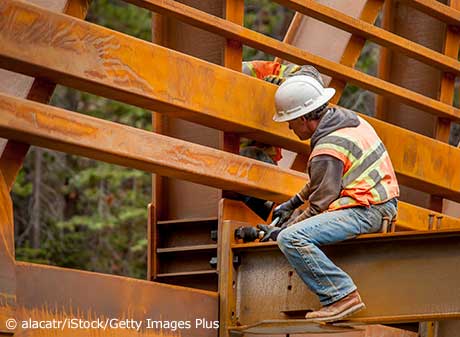Construction’s Impact on Other Industries during the Great Recession

Industries that trade heavily with the construction industry were hit harder by the Great Recession than those that don’t, according to an Economic Synopses essay.
The structure of U.S. production networks is such that output from one industry becomes the inputs for other industries. Therefore, an industry-specific shock can spill over to other industries and has the potential to impact aggregate economic health, explained Economist Sungki Hong and former Senior Research Associate Hannah Shell.
The authors examined the role of the construction industry in the 2007-09 recession, given its important connections to other industries. In addition, it is one of the biggest industries in the U.S.
Construction’s Connections with Other Industries
Hong and Shell noted that the construction industry is a large buyer and seller of material inputs. It buys the most from the following industry groups:
- Other services
- Metals manufacturing
- Wholesale and retail trade
- Financial, insurance and real estate
It sells the most to the following industry groups:
- Metals manufacturing
- Lumber manufacturing
- Electrical machinery
- Mining
Industry Output during the Great Recession
The authors looked at growth in the construction industry through the Great Recession as well as composite growth rates for the industry’s 10 most-related and least-related industry partners. These growth rates are shown in the figure below.
Hong and Shell found that industries most related to the construction industry were hit sooner and harder than those that are least related.
Initial Decline
They noted that output growth in the construction industry began declining in 2004—a few quarters before output growth for the most-related partners started falling and about two years before output growth for the least-related partners started falling.
After the Construction Industry Shock
The year-over-year growth rate of construction’s top 10 industry partners declined to below -15%, the authors found. By contrast, the year-over-year growth rate of the bottom 10 industry partners declined to about -6%.
While both composite groups quickly regained positive growth during the recovery, the construction industry’s growth remained negative through 2011. In explaining the slower recovery for the construction industry, the authors note that it took a long time for the existing housing stock to sell and to create demand for new homes.
Additional Resources
- Economic Synopses: Industry Connectivity: A Case Study of the Construction Industry
- Regional Economist: How Important Are Production Networks to the U.S. Economy?
- On the Economy: Startups Account for Smaller Share of U.S. Jobs
Citation
ldquoConstruction’s Impact on Other Industries during the Great Recession,rdquo St. Louis Fed On the Economy, July 28, 2020.
This blog offers commentary, analysis and data from our economists and experts. Views expressed are not necessarily those of the St. Louis Fed or Federal Reserve System.
Email Us
All other blog-related questions


